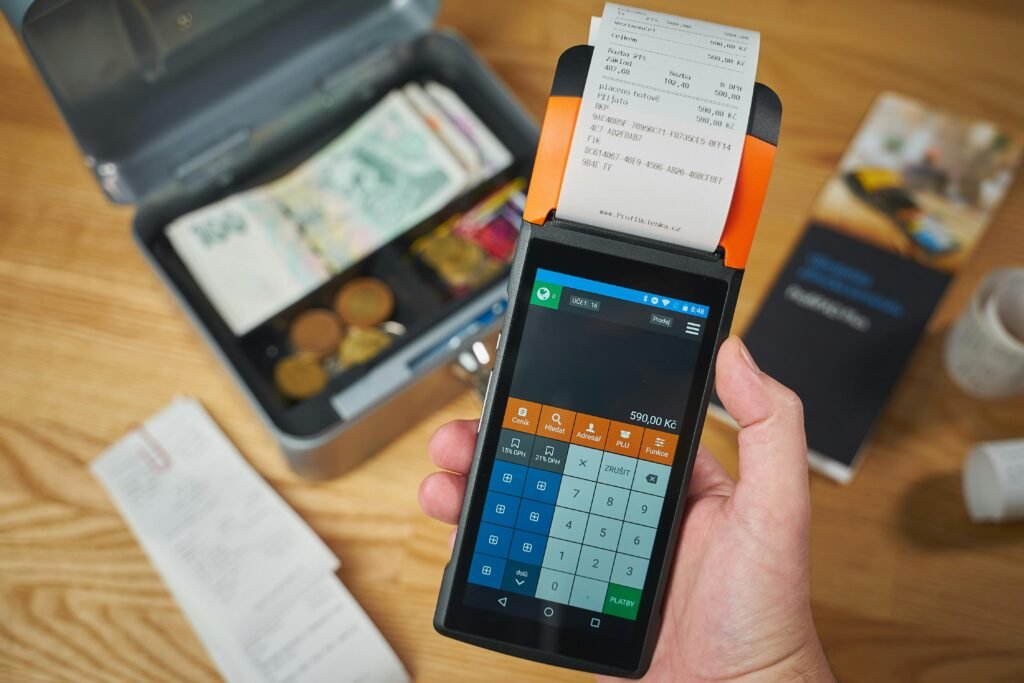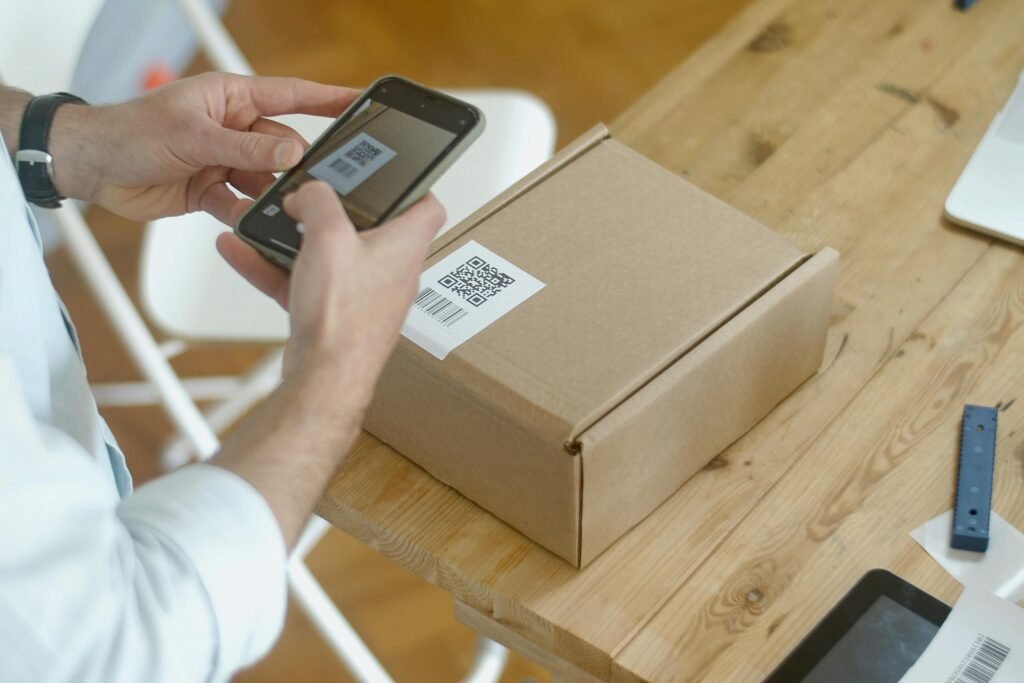Understanding Barcode Systems
Barcode systems are a pivotal technology utilized across various industries, fundamentally designed to improve efficiency and accuracy in inventory management, asset tracking, and data retrieval. A barcode system typically consists of a barcode, which is a visual representation of data in the form of parallel lines or squares, and a scanning device that reads this data, converting it into useful information. This simple yet effective technology streamlines processes by enabling quick data entry, minimizing human error, and enhancing operational speed.
There are several types of barcode technologies available, each suited for specific applications. The most common types include 1D and 2D barcodes. One-dimensional (1D) barcodes, such as UPC (Universal Product Code) and Code 39, are primarily used for retail and inventory purposes. These barcodes contain a series of vertical lines and spaces that represent numerical or alphabetical data. On the other hand, two-dimensional (2D) barcodes, like QR (Quick Response) codes and Data Matrix codes, can store more information and are suitable for applications such as product tracking, coupons, and ticketing systems. Unlike 1D barcodes, 2D codes can be scanned from various angles, making them versatile for many uses.
The importance of barcode systems extends beyond mere convenience. In an era where accurate data is vital for business operations, these systems facilitate seamless inventory management by allowing organizations to maintain real-time visibility over their stock levels. Enhanced asset tracking capabilities also assist businesses in keeping better records of their equipment and resources. Furthermore, integrating barcode technology can lead to reduced costs and increased profits by streamlining processes, improving accuracy, and optimizing decision-making based on reliable data. In many ways, barcode systems have become an essential part of modern business practices, highlighting their significance across different sectors.
Benefits of Barcode System Integration
Integrating a barcode system into existing operations can yield significant advantages for businesses across various sectors. One of the primary benefits is improved efficiency. By automating data collection through barcode scanning, organizations can dramatically reduce the time spent on manual entry. This shift allows staff to focus on more value-added activities rather than tedious data management tasks. For example, a retail company that adopted barcode systems reported a reduction in checkout times, thereby enhancing the purchasing experience for customers.
Another clear benefit of barcode system integration is the reduction of errors. Manual entries can often lead to mistakes stemming from miscommunication or simple human error. However, with barcode scanning, data input relies on precise, machine-based readings, which minimizes discrepancies. A manufacturing firm that implemented barcode systems observed a decrease in inventory discrepancies by 40%. This not only streamlined operations but also improved stock accuracy and demand forecasting.
Streamlining processes is another critical advantage that can arise from a well-implemented barcode system. Alongside efficient data collection, businesses can achieve better tracking of inventory, sales, and shipments. This holistic perspective of operations enables businesses to identify bottlenecks and inefficiencies easily. A logistics company that embraced barcode integration saw an improvement in their delivery times by optimizing their warehouse operations through real-time tracking capabilities.
Finally, enhanced customer satisfaction is often a byproduct of integrating a barcode system. Consumers today expect quick service and accurate information on product availability. By utilizing barcode technology, companies can provide real-time updates to customers regarding their orders and inventory status. A supermarket chain that implemented barcode integration reported an increase in customer satisfaction ratings due to decreased wait times and improved product availability.
Assessing Your Current System
Before embarking on the integration of a barcode system, it is imperative to conduct a thorough assessment of your existing inventory and management systems. Understanding your current framework allows for a smoother transition and helps to identify any potential gaps or compatibility issues. Here is a checklist of criteria to consider during this evaluation.
First, analyze your current inventory management processes. Document how inventory is tracked, ordered, and replenished. Understanding these practices will provide insight into which functionalities will require adjustments or enhancements post-integration. Evaluate whether your current system utilizes manual methods, such as spreadsheets, or if it is powered by existing software solutions. This evaluation is crucial as it directly impacts how barcode technology will fit into your operational workflow.
Next, assess the software applications in use. Determine if they support API integrations and are capable of handling barcode data. Your existing software should be able to communicate effectively with any new barcode solutions to ensure data consistency and integrity. Additionally, consider the hardware currently used in your operations, including scanners and printers, and evaluate whether they are compatible with the proposed barcode technology.
Another essential factor is the scalability of your current system. Consider whether your existing solutions are designed to accommodate your business growth. As your inventory needs evolve, your barcode system should be able to expand and adjust without significant cost or effort. It is also beneficial to gather feedback from team members who use the current system regularly. Their insights could highlight pain points and potential areas for improvement, aligning the integration process with overall business goals.
By meticulously assessing your current inventory and management systems against these criteria, you will be better positioned to implement a barcode solution that enhances efficiency, accuracy, and productivity.
Choosing the Right Barcode Solution
When integrating a barcode system into your operations, selecting the right barcode solution is crucial for optimizing efficiency and reducing errors. To start, consider your specific business needs; this determination will guide your choices regarding hardware and software. Hardware options typically include barcode scanners and printers, each tailored to meet different operational requirements. For instance, if your environment involves high-volume scanning, investing in industrial-grade scanners is advisable. Likewise, a robust printer is essential for producing labels that withstand various handling conditions.
Next, evaluate both budget constraints and scalability. It’s vital to strike a balance between cost and functionality. While it may be tempting to choose the cheapest solution, consider the longevity and reliability of the equipment. More expensive, high-quality solutions may save you money in the long run due to lower maintenance and replacement costs. Additionally, ensure that your chosen solution can scale as your business grows. This includes assessing whether your barcode system can accommodate future business needs, such as increased inventory or additional locations.
Moreover, focus on the software aspect of your barcode system. Many inventory management systems incorporate barcode functionality, making tracking and managing stock more efficient. When choosing software, ensure it seamlessly integrates with your existing systems. Additionally, it should offer user-friendly interfaces and reliable customer support. Take the time to research available options, read user reviews, and, when possible, test the solutions before committing.
Ultimately, the right barcode solution can enhance your productivity, streamline operations, and yield significant returns on investment. By carefully assessing your hardware and software options in terms of budget, scalability, and user requirements, you can establish a robust barcode system tailored to your business operations.
Planning the Integration Process
Effectively planning the integration of a barcode system is a fundamental step that can significantly influence the success of the implementation. To achieve a seamless transition, organizations should start by setting clear objectives that define the purpose and expected outcomes of the integration. These objectives should be specific, measurable, achievable, relevant, and time-bound (SMART), allowing all stakeholders to have a unified understanding of the project goals.
Establishing a realistic timeline is also crucial in the integration process. This timeline should outline all phases of the project, from initial discussions to the final rollout of the barcode system. Breaking down the implementation into smaller phases can help track progress more effectively and allow adjustments to be made as needed. Each phase should have designated milestones to ensure that the project stays on schedule and that all tasks are completed in a timely manner.
Allocating appropriate resources is another key factor in successful barcode system integration. This includes budgeting for necessary software and hardware, as well as dedicating human resources such as IT staff, project managers, and other team members who will be responsible for various aspects of the implementation. Ensuring that the team is well-trained and knowledgeable about the new system will significantly improve the overall efficiency and effectiveness of the integration process.
Lastly, identifying key stakeholders is critical. This group can include representatives from various departments such as operations, finance, and IT, who will provide valuable insights and feedback throughout the integration process. Engaging these stakeholders from the outset can foster collaboration and alignment, leading to a smoother integration of the barcode system across the organization.
Data Management and Migration
The successful integration of a barcode system significantly relies on effective data management and migration strategies. These elements serve as the foundation for ensuring that existing data is accurately and efficiently transferred into the new system. One primary consideration is to assess the current data quality, as data integrity is crucial during this process. Poor quality data can lead to inaccuracies, confusion in inventory management, and potential financial losses.
Prior to migration, it is essential to conduct a thorough audit of your existing data. This audit should identify inconsistencies, duplicates, or inaccuracies that need to be rectified before the migration process begins. Data cleansing should be prioritized to maintain the highest standards of accuracy. Additionally, categorizing data by its relevance and importance can help in systematically migrating only necessary information, thus avoiding overloading the new barcode system with superfluous data.
Another vital aspect is choosing the right migration technique. Depending on the size and complexity of the data, organizations might opt for a cutover or a phased migration approach. The cutover strategy involves switching from the old system to the new one in a single transition, while a phased approach allows migrating data in segments, minimizing risks associated with data loss.
Data backup is also paramount during any migration process. Maintaining a secure backup ensures that in the event of unexpected errors or data corruption, original information can be restored. Furthermore, involving cross-functional teams throughout the migration will foster collaboration and communication, helping to identify potential issues early on.
Overall, meticulously managing and migrating data into a new barcode system not only preserves data integrity but also sets the stage for a more efficient and effective system in the long run.
Training Your Team
Effective training is crucial when integrating a new barcode system within any organization. Proper training not only ensures that employees are comfortable and proficient with the new technology but also enhances overall operational efficiency. Therefore, it is essential to adopt best practices that facilitate a smooth learning experience for your team.
First, it is beneficial to conduct a comprehensive needs assessment to establish the specific training requirements of your staff. Understanding their existing skills and familiarity with technology will help tailor the training sessions to meet individual and group needs. This personalization enhances engagement and lays a solid foundation for mastering the barcode system.
Next, hands-on demonstrations should be a core component of the training. Employees often absorb information better when they can physically interact with the barcode system. These practical exercises can include scanning items, adjusting settings, and resolving common issues. This experiential learning allows team members to apply theoretical knowledge, fostering a deeper understanding of the system.
Moreover, training should not be a one-time event; ongoing support is vital. Regular follow-up sessions can address challenges that arise as staff integrate the barcode system into their daily routines. Establishing a support system, whether through online resources, a dedicated helpline, or regular check-ins with a knowledgeable team member, can assist employees in becoming fully proficient.
Additionally, creating training materials, such as user manuals and quick-reference guides, can serve as valuable resources that employees can reference post-training. Visual aids and easy-to-understand documentation can enhance retention and provide a safety net as employees navigate the new technology.
By investing in comprehensive training and ongoing support, organizations can ensure that their teams are not only proficient in using the barcode system but also confident in their abilities, leading to a smoother integration process and improved workplace efficiency.
Testing and Troubleshooting
Testing is a crucial phase in the implementation of a barcode system. Before fully deploying the barcode solution across your operations, it is essential to conduct thorough testing to ensure that the system functions correctly under various scenarios. The primary goal of testing is to identify any issues that may disrupt workflows and accuracy in barcode scanning and processing.
One common issue encountered during testing is poor scan performance. This may manifest as delays in processing or failures to read certain barcodes altogether. Potential causes for this can include low-quality barcode labels, poor lighting conditions, or misconfigured scanning equipment. To troubleshoot this issue, first, ensure that your barcode labels are printed clearly and using proper material in accordance with your specific application requirements. Additionally, evaluate the scanning environment and adjust the lighting or location of the barcode scanners as necessary.
Another issue that may arise involves software integration problems. The barcode system needs to communicate seamlessly with existing inventory management or enterprise resource planning (ERP) systems. If data transfer is inconsistent or erroneous, check the system settings and ensure that both software applications are correctly integrated. Reviewing the data mapping and protocols can often reveal misconfigurations that can be easily adjusted.
It is also advisable to run different test scenarios, simulating various stages of operation to evaluate the barcode system’s performance comprehensively. For instance, test the scanning speed in high-volume situations, and ensure that the system effectively handles diverse barcode formats. Documenting the results of these tests will help in pinpointing inefficiencies and aids in further refining the system before full-scale deployment. Effective testing and troubleshooting are indispensable for achieving a seamless and efficient barcode system integration.
Continuous Improvement and Support
Once the barcode system is successfully integrated into your operations, the journey does not end; rather, it marks the beginning of a continuous improvement phase. Ongoing assessment of the system’s performance is crucial to ensure its long-term effectiveness and efficiency. One of the fundamental aspects of this evaluation is gathering user feedback. Engaging with staff who interact with the system daily provides valuable insights into its functionality and usability. Regular surveys or informal discussions can help you identify common pain points or areas where enhancements may be required.
Additionally, assessing system performance should include both quantitative and qualitative metrics. Analyzing barcode scan accuracy, processing speed, and error rates can highlight potential operational bottlenecks. Use software tools that monitor these metrics in real time to offer a comprehensive view of how well the system is performing. It is essential to set benchmarks and compare current performance against these standards to determine whether adjustments are necessary.
Moreover, establishing a dedicated support team or point of contact for troubleshooting can greatly enhance user satisfaction and system reliability. Prompt attention to issues as they arise contributes to minimizing downtime and optimizing workflow processes. It is advisable to maintain an open line of communication with your barcode solution provider, as they can facilitate necessary updates and patches that address evolving business needs or system capabilities.
Finally, making periodic adjustments based on user feedback and performance assessments ensures the barcode system remains aligned with the organization’s goals. By committing to a culture of continuous improvement and support, businesses can maximize their investment in barcode technology, ultimately leading to greater operational efficiency and effectiveness.
© barcodly.com- All rights reserved





